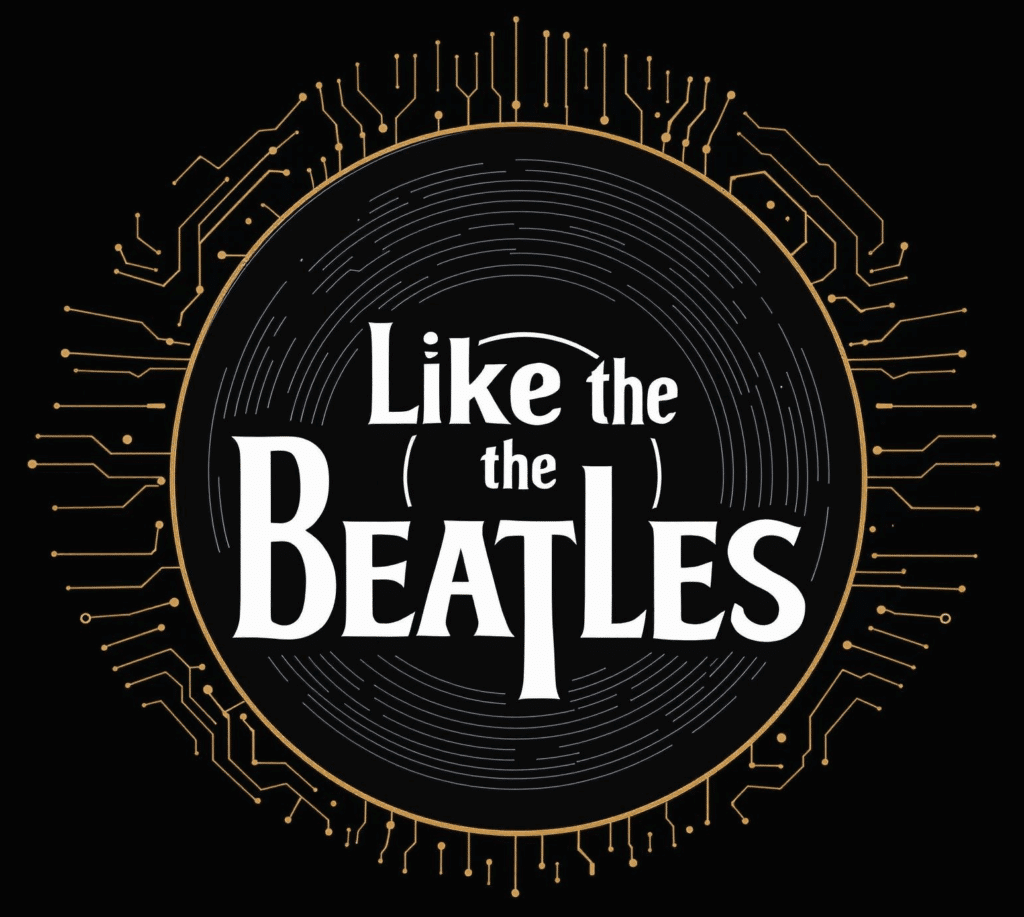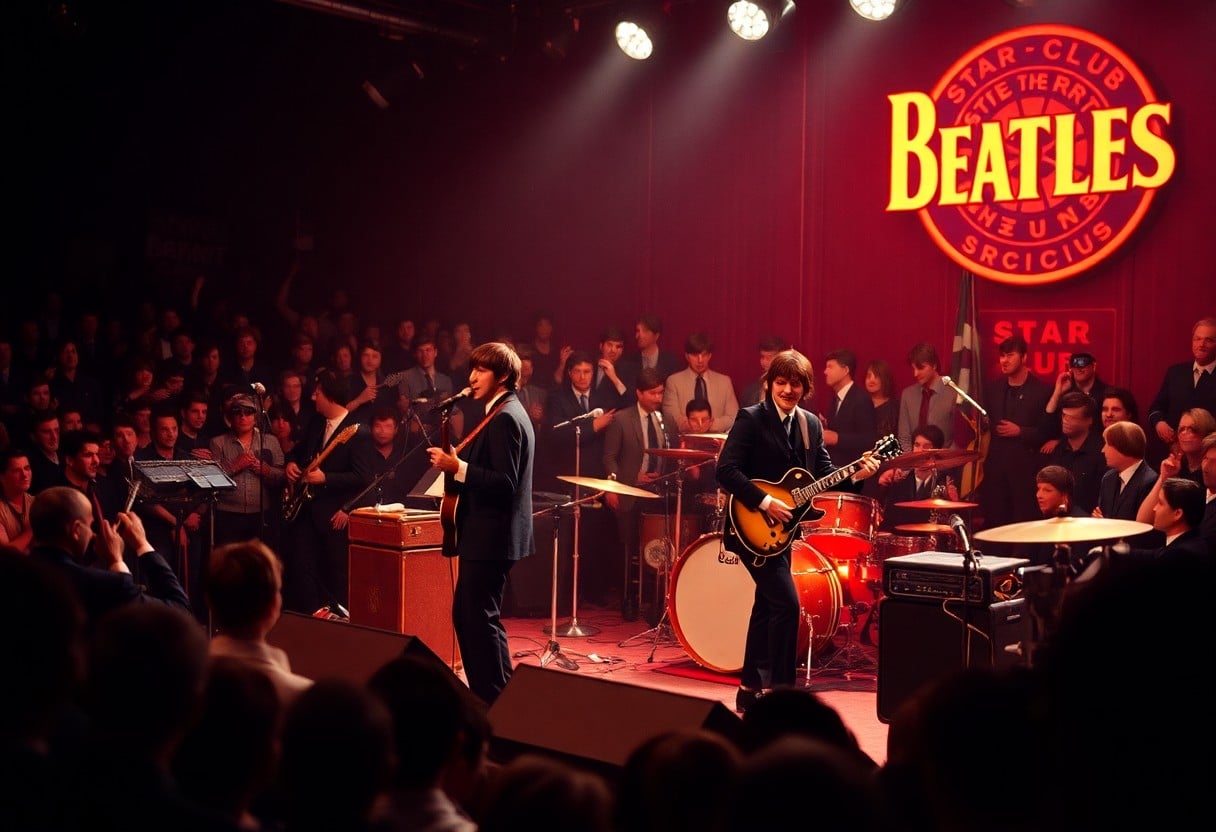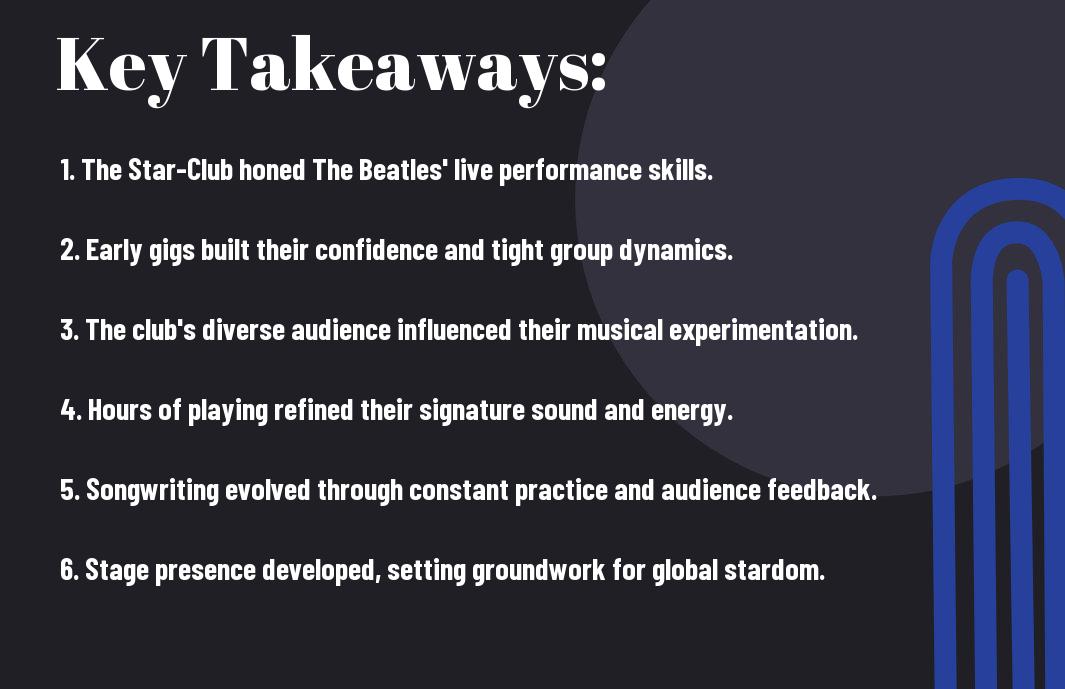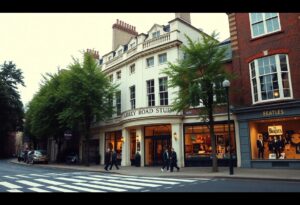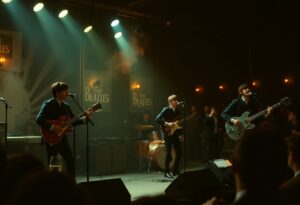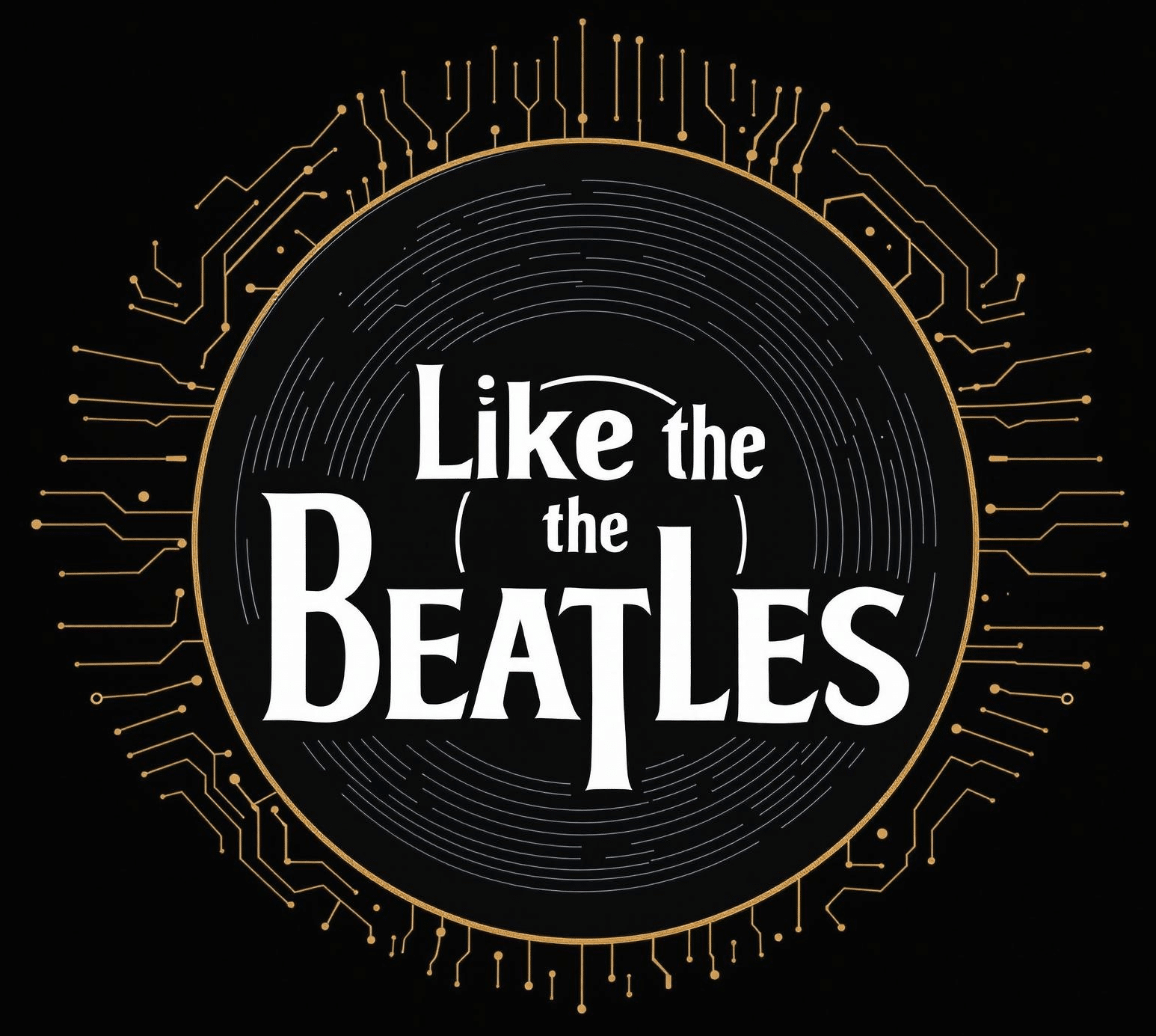Beatles fans and aspiring musicians alike, let me take you on a journey through the band’s early days in Hamburg’s Star-Club, where they honed their skills and developed their unique sound. You’ll learn how their experiences shaped their artistry, blending rock, pop, and experimental influences that propelled them to global fame. As I investigate into their transformative path, I’ll unveil key moments and influences that define their legendary music. Prepare to discover how this iconic band became the soundtrack of a generation, breaking boundaries and changing the music landscape forever.
The Early Days at The Star-Club
For The Beatles, the Star-Club in Hamburg was a transformative venue that helped mold their early sound. Playing extensively at this popular nightclub, they honed their skills through countless performances and interactions with diverse audiences. The atmosphere was electric, encouraging experimentation and growth as they faced tough challenges while establishing their unique identity amid the German music scene.
Origin of the Name
Days after their arrival in Hamburg, the club was dubbed the Star-Club, a name that perfectly captured the ambitions of the up-and-coming artists. This title set expectations for both the performers and the audience, with the implication that the musicians who played there were destined for greater things and would ultimately aspire to achieve stardom.
Influences and Musical Roots
Behind their evolving sound were influences that shaped The Beatles into the legendary band we know today. They drew inspiration from a wide range of genres, including rock ‘n’ roll, skiffle, and rhythm and blues. At the Star-Club, they encountered various artists who introduced them to new styles, allowing them to blend and experiment with their own songs. This fusion of sounds ignited their creativity and set the foundation for their innovative approach to music.
But it was at the Star-Club that the band truly found their musical roots, as they absorbed the dynamic energy of live performances. The pulsating rhythms of American rock played by influential artists like Chuck Berry and Little Richard ignited their passion, while British skiffle groups nurtured their early creativity. The intense competition among musicians in the club pushed them to refine their talents and develop their unique style. This rich tapestry of influences created the perfect environment for experimentation that would ultimately lead to their groundbreaking sound.
Development of Their Unique Sound
Some may argue that the essence of The Beatles’ immense popularity lies in their distinctive sound, which evolved significantly throughout their career. They began as a simple rock and roll band but soon incorporated a wide range of musical styles and influences, forging a unique audio identity that resonated with audiences worldwide. This transformation not only defined their music but also set new trends in the industry, showcasing their innovative spirit and creative experimentation.
Melding of Genres
On this journey, The Beatles skillfully blended various music genres, mixing rock, pop, blues, and even elements of classical and Indian music. This genre-melding approach allowed them to reach broader audiences and pushed the boundaries of popular music, inspiring countless artists to explore new creative possibilities. Their willingness to experiment with different sounds played a pivotal role in reimagining what pop music could be.
Songwriting Evolution
To truly understand the impact of The Beatles, one must examine their evolution as songwriters. They started with catchy melodies and simple lyrics, but as they matured, their songwriting became more sophisticated and introspective. This growth reflects their personal experiences and the changing cultural landscape of the 1960s, enabling them to connect with their listeners on deeper emotional levels.
Evolution in their songwriting was marked by a shift from the straightforward love songs of their early career to more complex themes and narratives in later works. As a result, they tackled social issues, inner struggles, and enriched their compositions with innovative structures and surprisingly candid lyrics. This transformation not only showcased their artistic growth but also elevated the expectations for songwriters in popular music, paving the way for future generations and proving that music could be both entertaining and meaningful.
Recording Breakthroughs
All of The Beatles’ early experimentation paved the way for their transformative sound, with pivotal moments captured in sessions that would define modern music. Their time at the Star-Club can be explored in more depth through articles like THE BEATLES’ STAR CLUB RECORDINGS THE REEL STORY. With each recording, they moved further from their roots, crafting a unique identity that blended rock, pop, and avant-garde elements.
The Role of Producer George Martin
Martin’s influence was paramount in shaping The Beatles’ sound. His expertise in the studio allowed them to experiment beyond traditional songwriting, using innovative techniques that led to their signature harmonies and arrangements.
Key Albums and Their Impact
Against the backdrop of societal change, The Beatles’ key albums began to resonate deeply with listeners. The sonic landscape they created was unmatched, inspiring generations and challenging musical boundaries.
In addition to that, albums like “Sgt. Pepper’s Lonely Hearts Club Band” and “Revolver” showcased their unparalleled creativity and willingness to push artistic limits. By introducing elements like orchestral arrangements and experimental studio techniques, they forever altered the course of popular music. The Beatles not only set the stage for future artists but also demonstrated the potential of music as a form of cultural expression, leading to a lasting impact on both the music industry and society at large.
Innovations in Performance
Keep in mind that The Beatles were not just musicians; they were pioneering performers who revolutionized the way music was experienced live. They understood the importance of engaging their audience, transforming their concerts into immersive experiences filled with energy and excitement. Whether through their electrifying stage presence or clever audience interactions, The Beatles set the standard for future acts, making each performance a memorable event that bridged the gap between the band and their fans.
Live Performances and Audience Interaction
Before hitting the big stage, The Beatles honed their craft in small clubs. They learned to read their audience and quickly adapted their performances to connect more deeply with fans. This unique ability to interact with the crowd elevated their shows from mere concerts to communal experiences, where every laugh and cheer fueled their energy. The blend of spontaneity and charm created an atmosphere that drew fans in and left an indelible mark on the art of live performance.
Iconic Visuals and Style
Against the backdrop of traditional rock and roll, The Beatles cultivated a unique style that contributed significantly to their iconic status. Their decision to experiment with fashion, hairstyles, and stage aesthetics made them trendsetters of the 1960s. Each album release brought a new visual identity, often aligning with the evolving sound of their music, while their stylish suits and later, flamboyant attire, helped define the visual language of the era.
Innovations in visual presentation were vital as The Beatles expertly used fashion to reflect their artistic evolution. They transitioned from matching suits to bold, psychedelic outfits that mirrored their musical experimentation. This strategic use of visual identity not only captured the spirit of the ’60s but also influenced countless artists to explore their style as a form of expression. In doing so, The Beatles elevated the importance of visual elements in music performance, ensuring that their impact resonated beyond just sound but also aesthetics, ultimately shaping how artists approach visual storytelling today.
Cultural Influence and Legacy
To truly understand the cultural influence of The Beatles, one must recognize how their innovative spirit permeated various aspects of society, including fashion, language, and social attitudes. Their blend of musical styles not only transformed the music industry but also shifted social norms, encouraging a wave of creativity that continues to inspire generations today.
Impact on Music and Art
With their groundbreaking approach to songwriting and recording techniques, The Beatles redefined both music and art. They popularized concepts like the concept album and introduced a new level of sophistication in lyrics, influencing countless artists and genres. Their willingness to experiment pushed boundaries and encouraged both artists and listeners to embrace a more diverse palette of sounds.
The Beatles in Popular Culture
Among the most iconic symbols of the 20th century, The Beatles have left an indelible mark on popular culture, shaping not only music but also fashion and societal norms. Their style, both in terms of attire and persona, became a phenomenon, influencing how music stars present themselves even today.
Plus, The Beatles acted as a powerful catalyst for change, reflecting and shaping societal values during the turbulent 1960s. Their albums became the soundtrack for a generation, often addressing revolutionary themes like love, peace, and social consciousness. The band’s influence is still visible in contemporary music videos, artwork, and even fashion trends. I find it fascinating how their legacy inspires new artists and serves as a reference point for creative expression across cultures, proving that their impact extends far beyond just music.
To wrap up
Taking this into account, I believe that the journey of The Beatles from the Star-Club to global stardom truly illustrates their innovative sound development. By embracing diverse musical influences, continuously experimenting in the studio, and effectively engaging their audience, they transformed not just their own music but the entire landscape of popular culture. As you explore their evolution, you’ll uncover the profound impact that their artistry continues to have on musicians today, reaffirming their place as icons in music history.
